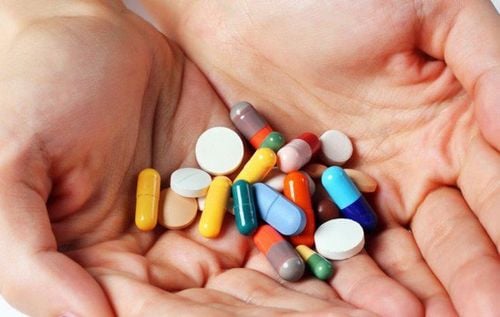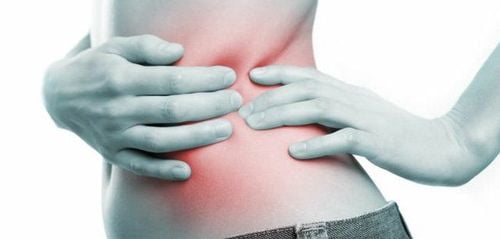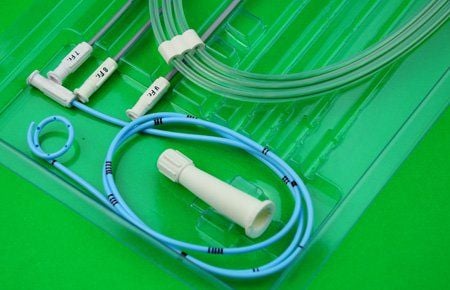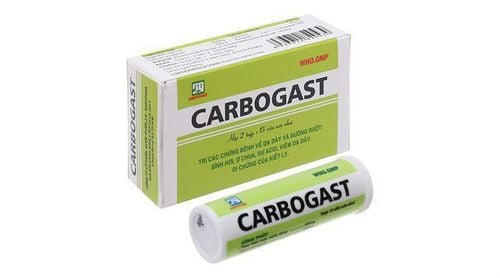This is an automatically translated article.
The article was professionally consulted by a Doctor Urologist - Department of General Surgery and Anesthesia, Vinmec Hai Phong International General Hospital.
Kidney stones - urinary is a common disease and tends to increase in both men and women. Currently, there are many modern, minimally invasive methods applied in the treatment of kidney and urinary stones. However, each method has its own advantages and disadvantages, and the application object will also be different.
1. Less invasive method
1.1 Extracorporeal lithotripsy Extracorporeal lithotripsy is a technique that uses pulses or lasers from outside the body in the area with stones. Waves penetrate the surface of the body, propagate in the water, converge on the stone, the stone will be broken. Stones are pushed out of the body by drugs that treat stones.
Advantages:
Extracorporeal lithotripsy is preferred for kidney stones < 2cm, upper 1/3 ureter, then lower 1/3 ureteral stone. The average lithotripsy was 81% (50-99%).
Disadvantages:
However, extracorporeal lithotripsy also has certain disadvantages such as:
Ineffective lithotripsy for solid stones (calcium oxalate stones with 1 water molecule), cystin stones. For stones larger than 2 cm, the effect is poor, in many cases, it has to be re-sprayed 2-3 times. The rate of lithotripsy is about 27% (7.1% - 50%). When having to reapply 2 or more times is an inconvenience for the patient in terms of money, time and health. The stone fragments do not go away, there is calcium accumulation remaining, causing the stone to return to become larger and difficult to move.
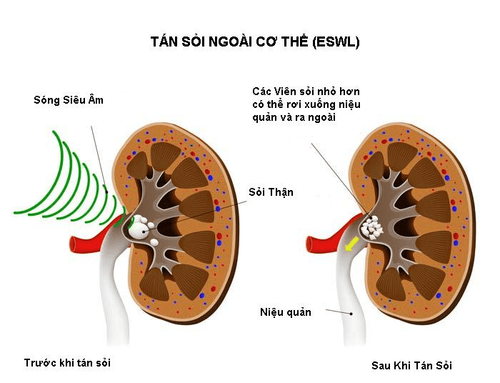
1.2 Ureteroscopy Lithotripsy is a technique that uses a ureteroscope to go from the urethra, through the bladder and up the ureter to directly access the stone. Then use compressed air or laser energy to break up the stone and pump and pick up to get all the stones out. Includes two methods:
Ureteroscopy using rigid or semi-rigid bronchoscope: This method is preferred for ureteral stones in the lower third and middle third. Ureteroscopy using flexible bronchoscope: Dissolve upper third ureteral stones, kidney stones. Advantages:
Can disperse all types of gravel < 20mm in size, including coral gravel. Simple method, patients can be discharged after about 12-24 hours of follow-up.
Disadvantages:
Not applicable to patients with urethral stricture or urinary tract in the stage of inflammation, infection. Risk of complications: perforation of the ureter (due to laser burning in the wrong position or spreading), not being able to place the endoscope to reach the location of the stone... High cost of lithotripsy.
1.3 Laparoscopy This is a method used to remove ureteral or renal stones using an endoscope through the peritoneum or retroperitoneum. At first, the surgeons preferred to go intraperitoneally, but recently only operated by the retroperitoneal route to avoid having to go into the abdomen. Only applies to upper ureteral stones and pyelonephritis. However, with the development of laser lithotripsy ureteroscopy with semi-rigid or flexible bronchoscope, the indications of this method are increasingly narrow.
1.4 Percutaneous lithotripsy Percutaneous lithotripsy is a technique to create a small tunnel about 6-10 mm, this tunnel runs from the skin to the kidney or stone site. Then use a laser to break up the stone and suck out small stones and pebbles.
This method is often applied to cases of pyelonephritis and calyx, rarely applied to stones in the ureter close to the renal pelvis. This method is preferred for complicated stones associated with urinary tract malformations such as cervical stenosis or ureteral junction stenosis.
Advantages:
The whole stone can be removed after one intervention, the method is applicable even to large stones.
Cons:
The tunnel for the endoscope to penetrate into the stone site may become infected after surgery or the process of dissolution is prolonged, which may cause blood loss. There are scars left after surgery. This method is quite expensive, after surgery, you have to stay in the hospital for about 3-5 days.
2. Medical treatment
2.1 Medical treatment of stone removal The aim is to support the patient to pass stones. Apply to: Small gravel less than 7mm in diameter, smooth, oblong-shaped gravel; The stone has not yet caused complications; Stones are also more likely to move and expel the natural way; The urinary tract under the stone is wide enough.
2.2 Treatment of symptoms or complications This method applies to patients: There is no indication for medical treatment of stone removal; no indications or no conditions for surgery, using less traumatic methods such as: stones in the calyx, kidney stones that the patient has contraindications to surgery or less traumatic methods; Prepare the patient for surgical or minimally traumatic intervention.
3. Endoscopic retrograde nephrolithiasis laser with flexible bronchoscope at Vinmec Hai Phong General Hospital
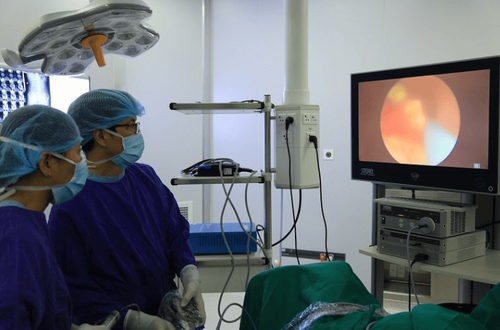
Endoscopic laser lithotripsy with a flexible bronchoscope is a modern, minimally invasive method with the outstanding advantage of helping to preserve maximum kidney function, helping patients to have less pain, faster recovery and no scarring due to kidney disease. Completely natural surgery. This is an advanced and technically demanding kidney stone treatment method, which can only be performed in large hospitals. Currently, Vinmec Hai Phong International General Hospital has put into practice this method.
Vinmec Hai Phong International General Hospital has a team of highly qualified and experienced doctors, especially in the field of endoscopy.
Advanced and modern medical equipment system for high treatment efficiency. Modern imaging system, Karl storz endoscopy system, 30w, 100w Sphinx laser diffusers bring the highest treatment efficiency. The operating room system is strictly controlled for infection, and patients usually only need 1 dose of prophylactic antibiotics. Professional service with civilized and modern wards, one room per patient and comprehensive monitoring of health parameters, well-confidential patient information. Surgical customers at the Department of Surgery, Vinmec Hai Phong Hospital enjoy outstanding benefits including:
Short hospital stay, minimizing the cost of stay, reducing the risk of hospital infections. With cases of lithotripsy, inguinal hernia, customers can always go to work after 1 day of discharge from the hospital. Limit the use of antibiotics, reduce the risk of side effects, save costs, patients do not have to worry and fear when administering antibiotics and monitoring after taking the drug. The recovery rate reached 90%, re-hospitalization 0%, postoperative infection 0%. The Early Post-Surgery Care Program provides comprehensive care to patients before, during and after surgery, helping to reduce hospital stay, improve treatment quality and reduce costs; reduce the rate of complications. ERAS has been shown to shorten the mean length of stay from 8-10 days to 3-4 days. Insurance : Vinmec signed with many large private insurance partners. When customers are hospitalized, they are guaranteed and compensated at the hospital. Save a lot of customer's time and effort. Other advantages : Modern equipment; Service quality according to international standards; Highly qualified doctor; Patients do not need relatives to take care of them because they are cared for by a dedicated and attentive nursing doctor...
Please dial HOTLINE for more information or register for an appointment HERE. Download MyVinmec app to make appointments faster and to manage your bookings easily.




